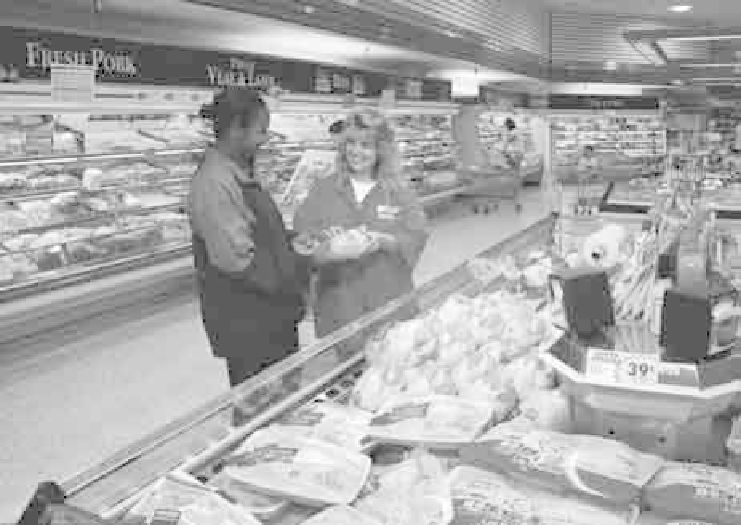Agriculture Reference
In-Depth Information
Plate 3.2
Saleslady
Agribusiness managers must determine how to allocate resources such as sales time and effort
across competing enterprises. Photo courtesy of USDA.
and to take the new job would have yielded higher returns than the landscaping business.
Even though the accounting profi t would still be positive, the negative economic profi t
clearly indicates problems. Should this trend continue for a few years, it would make sense
for Susan to sell out, unless she feels that the freedom and psychological rewards from
running her own business offset the negative economic profi t.
Before investing sums of money in specifi c alternatives, managers must be able to esti-
mate opportunity costs. This estimate helps managers to decide whether any given use for
their resources of time and money is the very best opportunity available. However, some
shortcomings of the economic profi t concept should be recognized.
First, many of the “imputed” values for implicit costs in reality are hard to estimate. In the
case of Susan Lambert, what interest fi gure will yield the “correct” opportunity cost for the
situation? For some people the 8 percent rate will apply, but other investors have the know-
how and time to research other possibilities and invest at rates of 12 percent or higher. The
same argument applies to the salary fi gure specifi ed: this may or may not be realistic, depend-
ing on the situation.
Second, a potentially faulty assumption is made that employment in industry would be
currently available for Susan. Furthermore, a change in employment might cause personal
or family problems. Weighing adjustments of this kind, in dollar terms, can be extremely
diffi cult if not impossible. It also explains why accountants do not try to measure them.
Finally, different types of investments may be diffi cult to directly compare with one
another in a way that will satisfy the opportunity cost concept. For example, investment in

